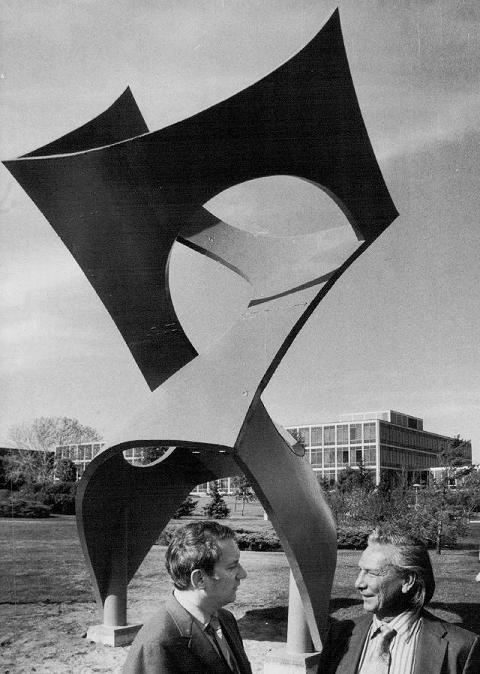 |
Canku Ota
|
 |
|
(Many Paths)
|
||
|
An Online Newsletter
Celebrating Native America
|
||
|
February 2018 - Volume
16 Number 2
|
||
|
|
||
|
Charles Huntington
|
||
|
by Matt McKinney - Star-Tribune
|
||
The Ojibwe artist's massive steel sculptures propelled him from blue collar beginnings to the top of the art world as he devised a career all his own. It began with boredom, Charles Huntington once told a reporter, when his first career as an auto mechanic became monotonous. With spare parts, and odds and ends around the garage, he began making art out of crushed wheels, hood ornaments and whatever else drew his imagination. That led to early shows of his "found objects," which won attention from serious art collectors. A critic dubbed him "the poet of the curve."
He rose to the top of the art world, with shows at the Minneapolis Institute of Art and grants from the National Endowment for the Arts. His commissions were often towering pieces of steel that somehow looked as if they were floating. Those who knew him said he was much like his sculpture, a commanding presence, by turns intimidating or full of grace. It was an unlikely role for Huntington, an Ojibwe Indian from a blue-collar background who was born in the remote northeast Wisconsin town of Niagara. After a stint as a steam engineer in World War II, he drove a taxi, raced cars and then began repairing them. A year in art school followed, along with an apprenticeship, but Huntington otherwise devised his own career, making studios where he could find them, working always. He'd come up from his basement studio at the Black Forest Inn in south Minneapolis, grimy from work, said his longtime friend and assistant Beryl Wells Hamilton. He might show off a new piece or generously give it away to a friend. Among his last pieces was "Unity," now installed at Hibbing Community College. It's a simple form of two steel pillars rising and twisting together in what looks most like a dance. In 2012 he told the Hibbing Daily Tribune: "I don't believe that I make sculpture. I believe that sculpture made me." |
|||
|
|
|
|
||
|
|
||
| Canku Ota is a free Newsletter celebrating Native America, its traditions and accomplishments . We do not provide subscriber or visitor names to anyone. Some articles presented in Canku Ota may contain copyright material. We have received appropriate permissions for republishing any articles. Material appearing here is distributed without profit or monetary gain to those who have expressed an interest. This is in accordance with Title 17 U.S.C. Section 107. | ||
|
Canku Ota is a copyright ©
2000 - 2018 of Vicki Williams Barry and Paul Barry.
|
||
 |
 |
|
|
The "Canku
Ota - A Newsletter Celebrating Native America" web site and
its design is the
|
||
|
Copyright ©
1999 - 2018 of Paul C. Barry.
|
||
|
All Rights Reserved.
|
||

